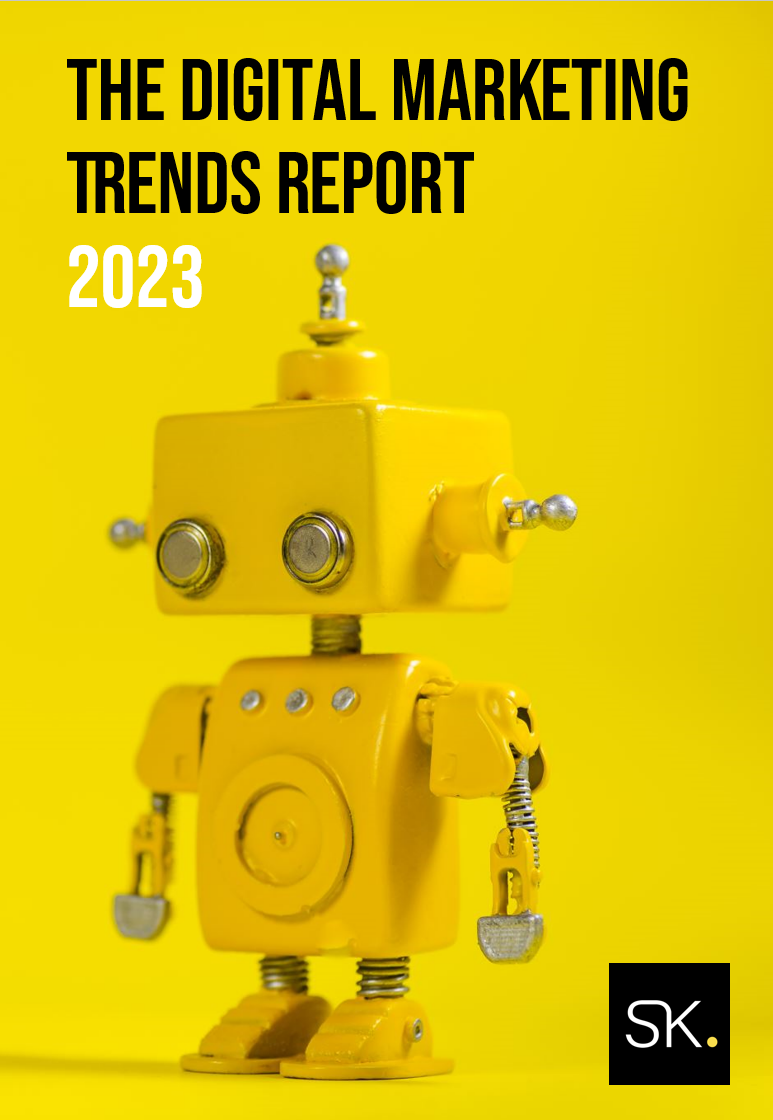Product marketing and service marketing – two distinct paths. While they share some similarities, there are some important differences to be aware of. Understanding these differences is critical when crafting a strategy that effectively communicates a business’ value to prospects.
This article explores the differences between the two so that marketers can be equipped with a strategy that effectively drives growth given the unique needs of the business.
What Are the Differences Between Product and Service Marketing?
The aim of product marketing is to highlight the unique features and benefits of a product, and to differentiate it from competitors in the market. Product marketers create campaigns that showcase the features, design, quality, and value of the product.
On the other hand, the aim of service marketing is to showcase the experience and expertise of the service provider. Service marketers create campaigns that highlight the benefits of the service, such as convenience, efficiency, and quality, as well as the trustworthiness of the provider.
While not always the case, service marketing often has a longer-term focus, as consumers looking for products tend to have a more immediate need. With that said, a portion of the target audience (especially millennials) may research products ahead of time, especially higher ticket items.
It’s preferrable to target customers that have an immediate need, not only for faster sales but it’s also easier to measure the ROI of a campaign with a simpler buyer journey.
(Of course, businesses always need to focus on the long-term for retention purposes; the point is that time to conversion is generally going to be longer when marketing a service.)
Some other key differences between marketing products and services:
- Customisation: Services are often more customisable and can be tailored to the specific needs of the customer, whereas products are typically standardised and mass-produced.
- Price: The pricing of products is often based on production costs and market demand, while the pricing of services may be based on the value delivered and the level of expertise required to deliver it.
- Evaluation of products and services: Products can be easily evaluated based on their quality, features, and performance, while the evaluation of services often involves subjective measures such as customer satisfaction, trust, and reputation.
- The role of trust: Of course, any business needs to ensure its consumers can trust that the business will live up to their promises, but the importance of trust is often greater when it comes to services. Unlike products, services cannot be returned if the consumer is not satisfied; as a result, it will be harder to retain them after a bad experience.
Overall, marketing products and services require different approaches and strategies to effectively reach and engage with potential customers and create long-term value.
Key Considerations for Product Marketing
E-Commerce Funnel Conversion and CRO
An e-commerce funnel typically consists of the following stages:
- Awareness: Potential customers become aware of a business and its products through advertising, social media, or other marketing channels.
- Interest: Potential customers show an interest in the business’s products by visiting its website, reading its blog, or signing up for its newsletter.
- Consideration: At this stage, potential customers are actively considering making a purchase and may be comparing the business’s products to those of its competitors.
- Conversion: Finally, potential customers become paying customers by making a purchase.
For Conversion Rate Optimisation (CRO) purposes, it’s essential to track the effectiveness of one’s marketing efforts at each stage of the funnel.
By tracking the number of visitors at each stage and analysing their behaviour, businesses can identify bottlenecks and make adjustments to improve conversion rates. For example, if a large number of visitors are dropping off at the consideration stage, the business may need to provide more detailed product information or customer reviews to help potential customers make a decision.
Other standard considerations for CRO include website usability and design; a website that is easy to navigate, visually appealing, and mobile-friendly can significantly improve the user experience, resulting in higher conversion rates.
In addition, product descriptions should be compelling and must clearly communicate the features and benefits of the product, and how it can solve the customer’s problem. It should be easy for the customer to find all the information about a product that they need so they have no cause for hesitation before purchasing.
Content Marketing for Awareness
With content marketing for products, the main focus is on raising awareness. As mentioned, customers buying products usually have an immediate need and the time to purchase is usually shorter. Content should therefore focus on educating the customer about the product, how to best use it, and so on.
Even at the interest and consideration stages of the funnel, the objective is to continue raising awareness about why the business’ products are better than those of competitors. Therefore, content largely comes down to product education overall.
Product Reviews
Focusing on getting reviews makes the product’s features, design, and quality clear to prospective customers. Since product quality is less subjective than service quality, the objective is to get a large number of reviews that leave similar positive feedback. When customers see consistency in this way, they will be more likely to buy. It’s simply a matter of giving them the evidence they need to make a solid decision, backed up by the agreement of multiple consumers.
Local SEO
Retail companies with brick and mortar stores need to include local SEO in their marketing strategy. Local SEO is the process of optimising a business’s online presence to rank higher in local search results, improving their visibility when someone searches for a product in the area, and driving more traffic to the business’ physical location.
Another advantage of local SEO is that it helps to attract people who are already looking for what the business offers, increasing the likelihood of conversions. As a result, local SEO can be highly cost-effective.
Part of ranking well for local search involves creating a detailed Google Business Pages profile containing images, customer reviews, and all the essential information about the business. While this is a technical SEO requirement, it gives customers a clear impression of whether the business is worth visiting in person; it also increases the business’ credibility as customers tend to see businesses that appear in the top search results as more trustworthy. In fact, photos, Google reviews, and position on the search engine results page are the top three trust signals consumers look for when performing local searches.
Google Product Ads
Google Product Ads are beneficial for several reasons. First, they are displayed at the top of search results and so have good visibility. They also bring in targeted traffic, increasing the chance of conversion. Google’s ad format allows businesses to include product information such as an image, price, and description, which can help potential customers make an informed purchase decision.
Shopify
E-Commerce businesses using Shopify can access a range of marketing features within the platform, including analytics, email marketing, Shopify audiences for targeting, and much more. For any business using the platform, it’s worth exploring these integrated options.
Find Customers that Have an Immediate Need
There are a few strategies for finding customers who are ready to purchase. Targeted advertising, as discussed, is effective in finding customer that are actively searching for what the business is selling.
In addition, remarketing will help target customers that have already shown an interest but have not completed the purchase. For example, one may display ads to customers that have visited the company website previously, or may send automated emails when customers abandon their carts.
To give customers that are on the verge of purchasing the push they need to complete the sale, offer promotions and other incentives such as free shipping.
Key Considerations for Service Marketing
Lead Generation
Lead generation is a crucial component of a successful service-based marketing strategy. As mentioned, service businesses often have a longer and more complex sales cycle than product-based businesses; to successfully close sales, businesses need to laser-target their leads and nurture them until the time is right. Identifying and focusing on the most qualified prospects that are most likely to become customers will bring the greatest ROI.
To nurture leads, it’s important to build relationships, as recently discussed regarding financial services marketing. Building relationships over time involves proactive customer outreach, outstanding customer service, and providing prospects with valuable information and resources that help educate and guide them through the decision-making process.
Social Advertising
Advertising through social media is just as important for service based businesses as it is for those selling products. Each social platform has its advantages, and LinkedIn is a powerful channel for B2B companies looking to generate leads.
LinkedIn’s ad targeting options are advanced, allowing businesses to target based on factors like job title, industry, company size, and more. This makes it an ideal platform for building relationships with prospects.
Customer Experience
Customer experience is critical to the success of any business but perhaps even more so with service-based businesses. As mentioned, services are intangible and often require a high level of trust between the service provider and the customer, and a good customer experience will help to develop that trust. A few ways to create a positive customer experience include personalisation, responsive and transparent communication, and following up with the customer after service is complete (this shows commitment to their satisfaction).
Testimonials
Testimonials for services have a different focus compared to product reviews. They should go into much more detail about aspects such as the expertise of the personnel involved, the personalised service received, the attentiveness to the business’ needs, and so on.
Content Marketing for Authority
Content that demonstrates authority helps establish the business as a credible and trustworthy source of information and expertise in its field, something especially important for financial services and healthtech businesses.
Creating high-quality content that is informative and helpful to potential customers enables a business to position themselves as thought leaders in their industry. Content such as white papers, e-books, and research studies are helpful to this end, but short form content also has its place within a service based content strategy.
In Summary
Product and service marketing are two distinct approaches. While they share some similarities, there are some key differences between the two that can make one more effective than the other depending on the business model.
The most fundamental difference is the fact that services are intangible and cannot be returned; therefore, it is important to gain the trust of prospects before they will be willing to commit. After all, the only assurance they have in some cases is the testimonials from other customers – they cannot look at a photograph of a service and examine its quality and craftmanship as they can a product.
Another vital difference is the length of the sales cycle, which tends to be shorter for products. The service based customer journey is more complex as customers lie in wait, looking for signs of the provider’s expertise and authority before making a purchase. This signals the importance of nurturing leads and publishing thought leadership content (while awareness and education is the focus for product-based content).
Keeping these core differences in mind will help guide any business along the most effective path when developing their campaigns.
To discover how we’re helping businesses worldwide develop leading marketing strategies, contact us – we would be delighted to assist.



